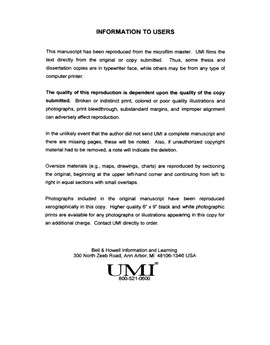| dc.contributor.advisor | Meo, Mark, | en_US |
| dc.contributor.advisor | Morrissey, Mark L., | en_US |
| dc.contributor.author | Mahmood, Rezaul. | en_US |
| dc.date.accessioned | 2013-08-16T12:30:44Z | |
| dc.date.available | 2013-08-16T12:30:44Z | |
| dc.date.issued | 1999 | en_US |
| dc.identifier.uri | https://hdl.handle.net/11244/5868 | |
| dc.description.abstract | Agricultural practice in Bangladesh is largely dependent on the monsoonal rainfall. Historical data show that Bangladesh experienced severe droughts and floods during monsoon months. Crop losses were reported under both of these extreme conditions. Intra-seasonal monsoonal rainfall variations also significantly affect rainfed rice productivity. Due to the immense importance of rainfed rice in annual crop production, it is essential to minimize crop and economic losses. Thus, studies of the monsoon's impacts on rice productivity can provide significant information for crop planners and decision makers who are interested in devising strategies to minimize losses. | en_US |
| dc.description.abstract | This project investigates intra-seasonal monsoonal rainfall variations and their impacts on the potential rainfed rice productivity in Bangladesh. A crop growth simulation model, the CERES-Rice, is applied to 16 meteorological stations located in the major rice growing regions and for eight transplanting dates to understand the dynamic relationships between the variable monsoonal rainfall and the rainfed rice and determine optimum transplanting date(s). The model applications reveal that rice yield decrease as the transplanting dates were moved well into the monsoon. The rate of decrease in yield is notable until July 15; thereafter, a very high decrease in yield occurs. Baseline estimates show, on the average, for a July 15 transplanting date, yield loss is 20.9% compared to a June 1 transplanting date. On the other hand, for an August 15 transplanting date, yield loss is 73.7% on the average compared to July 15 transplanting date. It is found that flowering/heading and maturing stage water stress play key role in determining yield. Further analyses show combined effect of water stress on yield during these two stages is more severe compared to one of these stages. This study reports that early transplanting may ensure the availability sufficient soil water during flowering/heading and maturing stages and thus reduce crop loss. Moreover, applications of a decision making technique suggests that a 'future year' like 1986 would be quite good for Bangladeshi farmers. Overall, the findings of this study will enable crop planners and policy and decision makers to develop more effective plans to mitigate crop losses due to extreme climatic conditions. | en_US |
| dc.format.extent | xv, 177 leaves : | en_US |
| dc.subject | Monsoons. | en_US |
| dc.subject | Geography. | en_US |
| dc.subject | Agriculture, General. | en_US |
| dc.subject | Rainfed lowland rice Bangladesh. | en_US |
| dc.title | Monsoonal rainfall variability, water stress, and rainfed rice productivity in Bangladesh. | en_US |
| dc.type | Thesis | en_US |
| dc.thesis.degree | Ph.D. | en_US |
| dc.thesis.degreeDiscipline | Department of Geography and Environmental Sustainability | en_US |
| dc.note | Source: Dissertation Abstracts International, Volume: 60-11, Section: A, page: 4129. | en_US |
| dc.note | Major Professors: Mark L. Morrissey; Mark Meo. | en_US |
| ou.identifier | (UMI)AAI9949694 | en_US |
| ou.group | College of Atmospheric & Geographic Sciences::Department of Geography and Environmental Sustainability | |
